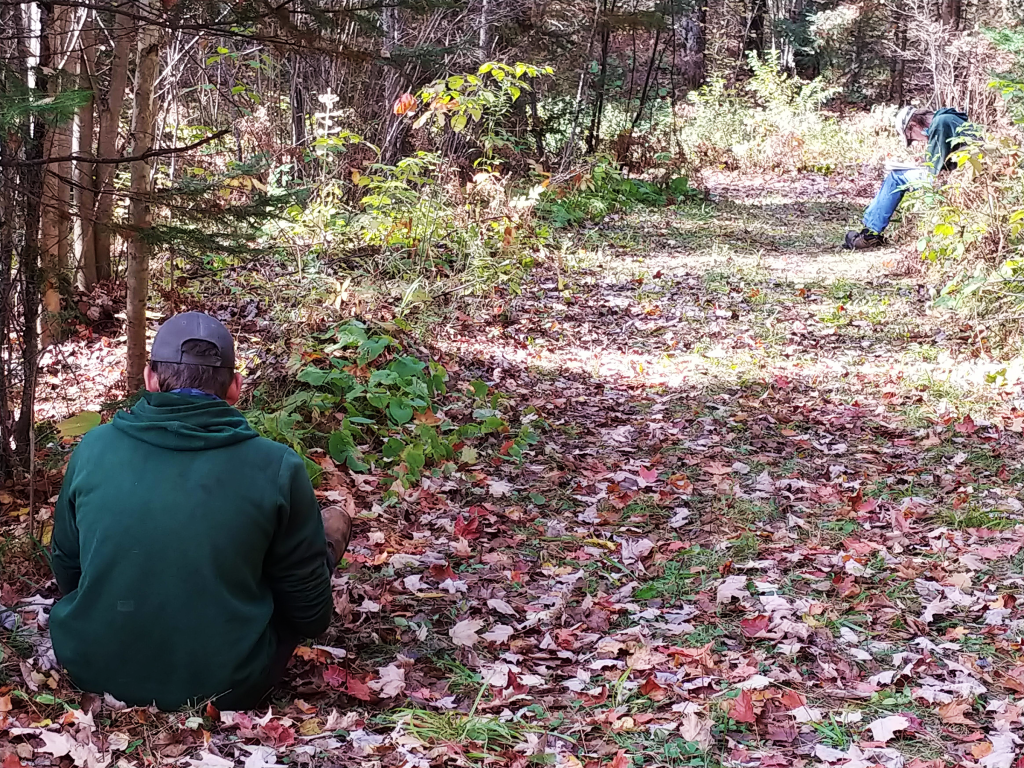Cultivating creative, curious learners outdoors at a teacher-powered school

Sometimes, people give up on kids. I have twenty of them in my little school, Class ACT. We call it a forest school because the school forest is our home base. “These are the tough kids,” some say. They are, but they deserve a free, high-quality education, too. It’s just that the four-hundred-year-old system of public education doesn’t work for enough kids anymore. It hasn’t for a long time.
So the tough kids choose a different school–one that lives its days in the woods or wetland or art studio. One where they use their voices to ask questions and find real answers and engage their bodies and minds by doing things important to them. One that uses a shared-leadership model, where teachers facilitate the learning in the nimbleness of autonomy uncommon in the legacy education model. Adults recognize project-based or hands-on learning as the remodel of their outdated bathroom or a repair on a vehicle. My students plant trees, create public-service announcements, write songs and poetry, repair their beater trucks, and trap and track ruffed grouse in a habitat research study. They design their school with their teachers.
“I love this tree”
You, Madam Tracy Lake, teach students perseverance because Nature’s cycle of growth and adversity, in all its beauty, reminds them there’s a process to everything in life. You touch their hearts, and they see the tender stems pop through a patch of muddy ground in the space between winter and spring and hear the pond waking up with the music of the peepers. You show my kids they can, and do, learn when they’re in a real place.
Samuel, a senior at-risk student, struggled to balance school and cultural expectations. His attendance suffered. His incomplete classwork and absenteeism left him a semester behind his peers. One day Samuel saw a gnarly white pine among thick understory and mid-sized aspen.
He stood next to the tree’s massive trunk and tipped his head in an attempt to see the very top of it. Enamored with the grandeur of the old pine, Samuel grabbed the tree in a bear hug.
“I love this tree,” he said. His cheek rested against it. His eyes closed.
“What about it makes you love it, Samuel?” I asked.
“I can’t even get my arms halfway around it.”
“I think we need one more Samuel if we want to make a circle. Who wants to join Samuel to see if you can link hands?”
“Me,” Hannah said. Also a senior she stumbled through the brush to the opposite side of the tree and wrapped the pine in her arms. Hannah was on the opposite side of at-risk. Unlike Samuel, she was ahead in credit and left school midday to work as a part-time grocery-clerk.
“Are we close to touching?”
“No way,” said Samuel. “We’ve got at least another foot to go. How old is this tree?”
“Probably ninety years. In the early 1900s, Tracy Lake School Forest looked like all the other northern Wisconsin forests–tall, straight, handsome white pines–until one day the lumber barons discovered they made good lumber. With hundreds of board feet from every tree, the barons felled and floated the white pine logs down the Flambeau River to Chippewa Falls and onto rail cars headed to cities like Chicago. When the barons abandoned the land three decades later, Tracy Lake and all the rest were reduced to scarred, burnt stumps.”
Samuel and Hannah dropped their arms from the tree as they dropped their eyes. We walked away from the old pine and continued on our way, but Samuel returned to the tree often. He sat at the foot of it, drawing and writing the stories of his heart and the woods, and he earned his high school diploma.

“As long as it’s not math”
Students like Samuel suffered from skittishness and distrust. Caged in a system of education from which they disengaged, they seemed hardened to the idea that learning was fun. When they weren’t defensive and uncooperative, they battled mental health and social-emotional issues.
Jason had his challenges, too.
“I don’t do math, Mrs. Zwicke,” the new freshman said.
“Hmmm, okay, Jason. Would you be willing to help me with the grouse project instead?”
“Sure, I can do that, as long as it’s not math.”
“We need to map the compass readings we have for Grouse No. 145.6742. You’ll need the PC and the data sheets, so you can plot the readings from the sheets to the Google map of Tracy Lake. Our goal is to see where this guy’s hanging out, so we need a small, accurate triangle.”
“So, as long as the bearings we took at each location are on the same side of north, I find the difference between the two, divide that difference in half, add it to the smaller of the two bearings, and put that number on the map, right?”
“That’s right. Nice job!” I said.
By later that fall, Jason had mastered triangulating bearings. When the readings didn’t make a triangle, he problem-solved which ones were inaccurate and recalculated. By winter, his peers considered him the expert at mapping and sought him out to check their own math. About that same time, Jason quietly picked up the algebra course he refused earlier in the year.

Creative, curious learners
Children will learn when they can. It’s my role to understand their barriers to learning and empower them to break through them. You, Madam Tracy Lake, provide us with an endless landscape of liberal education and creative opportunities to reach kids where they are. You show us we are the variegated wildflowers at the swamp’s edge that bloom when we’re ready, and the red lanterns of the autumn berry bushes, sparkling in shades of auburn as autumn turns to winter.
“Children will learn when they can. It’s my role to understand their barriers to learning and empower them to break through them.”
Students laugh and run and explore, and through it all, they engage in their academics. Jason’s barrier to math dissolved as soon as the math applied to something larger than a course; he had space and time to practice it along with the rest of us; and I relied on him to be integral to the research study, which gave him purpose and confidence.
My students become creative, curious learners the more time they spend with you, Madam Tracy Lake. They stop tumbling snags they pass and now take pictures of the many critter homes and meals in the rotten tree. They plant cranberry bushes and mountain ash seedlings, so the ruffed grouse have a winter food source. They pick less at their perceived human flaws. They learn they can learn, and our respect for each other, and you, Madam Tracy Lake, grows.
As we boarded the bus at the end of another day in the woods, Cody said, “You know, I’m not the same person as when I first came to this school. You changed me, Mrs. Zwicke. You change me.”
Class ACT is a teacher-powered, project-based school located within Chequamegon-Nicolet National Forest in northern Wisconsin. Class ACT students (grades 9-12) co-create equitable learning experiences alongside their teachers.
Paula Zwicke is owner of Superior Education Solutions & Consulting LLC. She retired in 2022 from full-time teaching, her most recent experience as Class ACT’s advisor, a position she held for fourteen years.
###
 NEWSLETTER SIGN-UP
NEWSLETTER SIGN-UP



